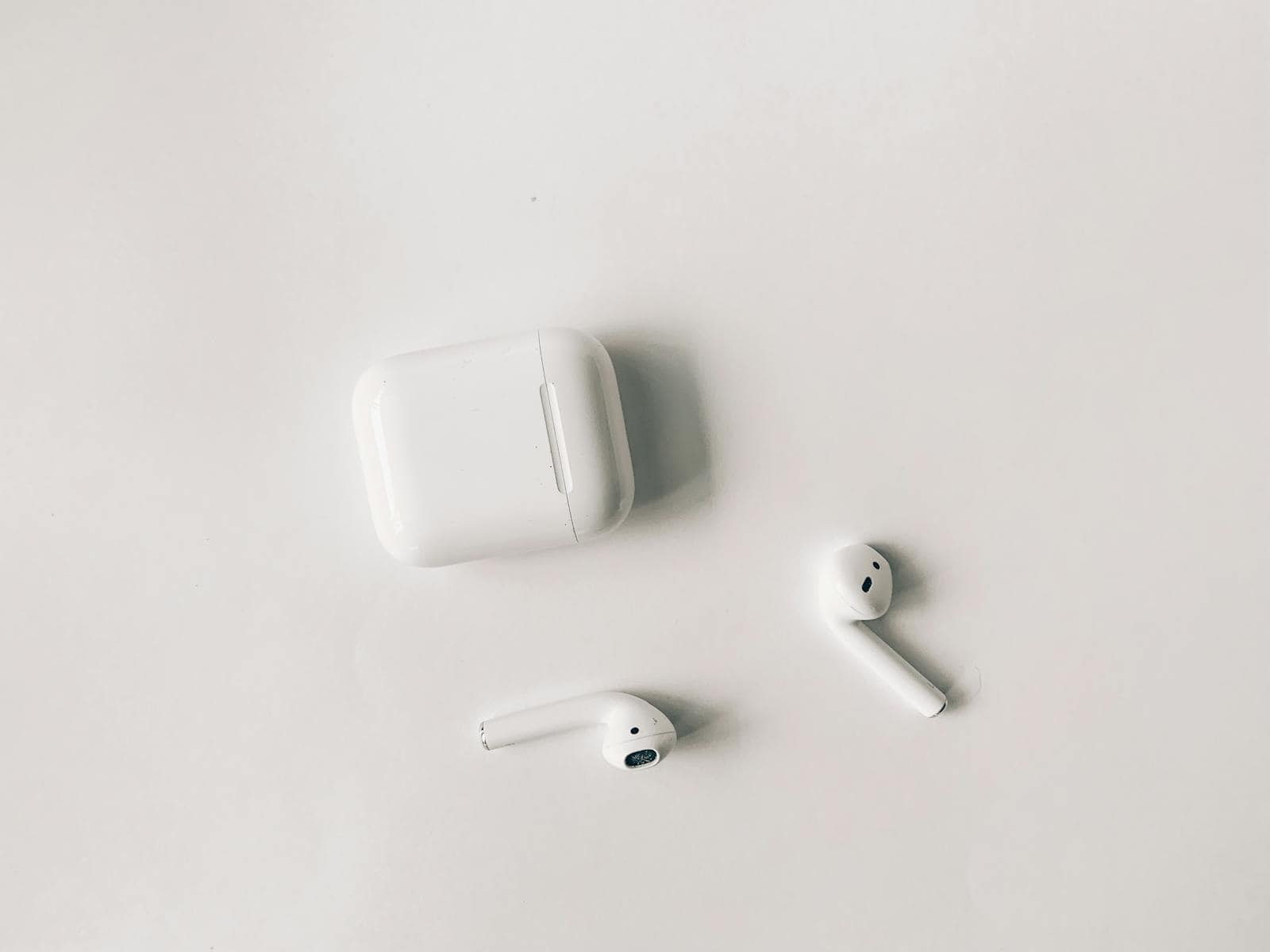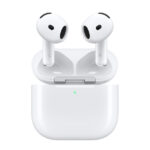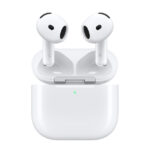Getting your AirPods to work with your favorite music app can be a bit tricky. Many iPhone users want to change their default music player for AirPods but find that Apple doesn’t make this option obvious. Currently, iOS doesn’t offer a direct setting to change the default music app that opens when connecting AirPods, which can be frustrating for those who prefer Spotify, YouTube Music, or other streaming services over Apple Music.
There are some workarounds that can help improve the experience, though. When asking Siri to play music, you can specify which app to use, and after a few requests, iOS might remember your preference. Some users have found that removing Apple Music completely forces their device to use alternatives, but this isn’t an ideal solution for everyone.
The lack of a straightforward option has been a common complaint among AirPods users who listen to music, podcasts, or audiobooks through apps other than Apple’s default options. Apple has occasionally tested features to address this in beta versions of iOS, such as when they briefly enabled options to change the default music player for Siri requests in iOS 14.5 beta.
How To Set Your Default Music Player for AirPods
While there’s no official “default music player” setting strictly tied to AirPods, you can influence which music app your AirPods use by managing a few smart settings and habits on your iPhone, iPad, or Mac. Here’s how to guide your AirPods toward your preferred music app like Spotify, Apple Music, YouTube Music, or others.
1. Use Siri To Train Your Preferred App
Apple doesn’t let you hard-set a default music player for AirPods directly, but Siri does learn your habits. The more often you use Siri to play music from a specific app, the more likely it is to default to that app next time.
Example:
- Say: “Hey Siri, play jazz on Spotify.”
- Or: “Hey Siri, play my workout playlist on YouTube Music.”
After a few uses, Siri will remember and continue using that app unless you specify otherwise.
2. Manually Start Music Before Connecting AirPods
If you open your preferred music app and start playing something before or right after connecting your AirPods, the audio will continue through that app. Your iPhone or Mac won’t override it unless you ask Siri to play something else.
3. Customize Tap Controls (Optional)
While not app-specific, customizing AirPods touch or button controls (especially for AirPods Pro and AirPods 3) can streamline music playback.
To adjust:
- Go to Settings > Bluetooth
- Tap the ⓘ next to your AirPods
- Set left or right press-and-hold/tap to Play/Pause, Next Track, or Siri
Using Siri as your shortcut to launch your preferred music app helps keep things in your control.
4. On a Mac: Use Your Favorite Music App First
On macOS, AirPods will route audio through whichever app is currently playing or was last used. So if you launch Spotify first and then connect your AirPods, Spotify stays in control.
5. Use Shortcuts for Specific Apps (iOS Only)
You can create a Siri Shortcut that launches your favorite app and starts playing a specific playlist or album.
Steps:
- Open the Shortcuts app
- Tap + to create a new shortcut
- Add “Open App” and choose your music app
- Optionally, add actions like “Play” or “Play Playlist”
- Name it “Play Music” and trigger it with Siri
This gives you near-default behavior through automation.
6. Delete or Offload Competing Music Apps
If you never want Apple Music opening by accident, consider deleting it or offloading it via Settings > General > iPhone Storage > Music > Offload App.
This forces your device to use another app, like Spotify, when responding to Siri or music requests.
While Apple doesn’t offer a one-click setting for default music apps, these steps let you take back control and steer your AirPods toward your favorite music experience. Let me know if you want help building a Shortcut or setting it up for a smart speaker setup too.
Key Takeaways
- iOS doesn’t currently provide a direct setting to change which music app automatically opens with AirPods.
- Using Siri consistently with your preferred music app may help train your device to use that app more often.
- Removing Apple Music is a drastic but effective option for some users who never use the default music app.
Setting Up Default Music Player on iOS Devices
iOS allows you to choose which music app your AirPods connect to when playing audio. This feature works through Siri commands and specific settings adjustments, giving you freedom to use services beyond Apple Music.
Understanding iOS Default Music Player Capabilities
Since iOS 14.5, iPhones and iPads have offered more flexibility in choosing default music apps. This doesn’t work like setting a default browser – there’s no simple toggle switch in Settings. Instead, iOS remembers your preferences based on your usage patterns.
Apple doesn’t provide an official setting labeled “default music player.” Instead, the system learns which service you prefer through Siri interactions and your listening habits. This approach is called “intelligence-based defaults.”
Your AirPods will typically use whatever music app you last used. But you can train iOS to prefer apps like Spotify, Pandora, or Amazon Music over Apple Music through consistent use.
Compatible music services include:
- Apple Music
- Spotify
- Pandora
- Amazon Music
- YouTube Music
Changing Default Music Player via Siri on iPhone and iPad
The easiest way to set your preferred music app is through Siri. When you ask Siri to play music without specifying an app, it might ask which service you want to use. Your choice becomes the default for future requests.
Try these commands:
- “Hey Siri, play music”
- “Hey Siri, play [song name]”
The first few times, Siri will ask which app to use. Select your preferred service. After doing this several times, iOS will remember your choice.
You can also teach Siri your music preferences by making app-specific requests like “Hey Siri, play Taylor Swift on Spotify.” This reinforces your preference for that service.
For Spotify users, go to Settings > Spotify > Siri & Search and toggle on “Use with Ask Siri”. This helps establish Spotify as your preferred music service.
Configuring AirPods with Different Music Services
AirPods work seamlessly with various music apps, not just Apple Music. The key is telling your device which app you prefer.
For optimal AirPods integration:
- Update to the latest iOS/iPadOS version
- Ensure your chosen music app is installed and logged in
- Connect your AirPods to your device
- Open your preferred music app and play something
- Use Siri to control playback
Your AirPods’ touch controls will automatically work with whatever app is currently playing music. Double-tapping (on older models) or pressing the stem (on AirPods Pro/Max) will control the active music app.
For users who prefer Apple Music but have other apps installed, you can ensure Apple Music remains your primary service by using it consistently and responding to Siri’s app choices accordingly.
Optimizing Music Experience with AirPods
AirPods offer several ways to enhance your listening experience beyond basic playback. Users can access their favorite music apps quickly, enjoy podcasts and audiobooks, and use voice commands for hands-free control.
Using Control Center for Quick Music App Access
The iOS Control Center provides fast access to music controls for AirPods. To open it, swipe down from the top-right corner on newer iPhones or up from the bottom on older models.
Long-press the audio card in Control Center to expand your music options. This shows which app is currently playing and lets you switch between recently used audio apps.
Many users don’t know they can change their default music app for AirPods. When Apple Music opens automatically despite using Spotify or other services, this becomes especially useful.
To customize Control Center:
- Go to Settings > Control Center
- Add Music Recognition or Hearing controls
- Rearrange items to your preference
This setup ensures quick access to your preferred music library without hunting through home screens.
Integrating Podcasts and Audiobooks with AirPods
AirPods work seamlessly with podcast and audiobook apps. The Personalized Spatial Audio feature creates an immersive 3D sound experience based on the shape of your head and ears.
For podcast listeners, enable “Enhance Speech” in Control Center when wearing AirPods Pro. This clarifies voices and reduces background noise.
Audiobook fans benefit from automatic bookmarking. When you remove your AirPods, playback pauses exactly where you stopped. When you put them back in, your book continues from the same spot.
Memory foam ear tips can improve sound isolation for longer listening sessions. These aftermarket tips create a better seal and enhance bass response for richer audiobook narration.
Voice Commands and Bluetooth Settings for Enhanced Control
“Hey Siri” voice commands let you control music without touching your phone. Try these useful commands:
- “Play my workout playlist”
- “Skip this song”
- “Turn up the volume”
- “Play the latest episode of (podcast name)”
Customize noise control modes through Bluetooth settings. AirPods Pro offer Active Noise Cancellation, Transparency mode, and Adaptive Audio.
To access advanced sound customization:
- Go to Settings > Accessibility > AirPods
- Adjust Headphone Accommodations
- Select preferred audio profile
Users can also optimize audio on Mac computers with similar settings. This ensures consistent sound quality across all Apple devices paired with AirPods.
Checking your iOS version matters. Newer updates often add features like Conversation Awareness that automatically lowers volume when you speak.





